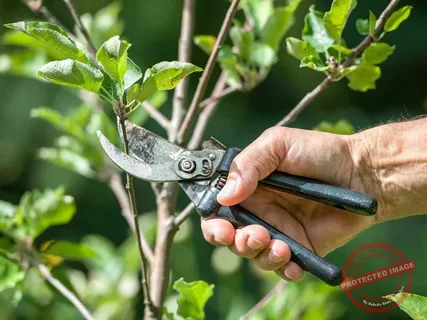If you’ve ever walked barefoot across your yard and felt like you were stepping on a mat of old cardboard, your soil is probably compacted. I’ve been there. You water, you fertilize, you mow neatly, and still, your lawn looks tired—patchy in some places, pale in others. It’s frustrating because you’re doing everything right. Or so you think. What your grass is really craving might not be more fertilizer or water, but a deep breath. That’s where lawn aeration comes in.
I learned this lesson a few years back after a particularly dry summer. My lawn had turned from lush green to dull brown, no matter how much I watered it. I was ready to call it quits and start a full lawn renovation. Then an old farmer friend told me, “You don’t need new grass, you just need to let the soil breathe.” That fall, I borrowed an aerator, spent a weekend poking holes across my yard, and within a few weeks—boom—new growth, stronger color, and thicker patches everywhere. It was like giving life back to something that had been holding its breath for years.
Here’s the truth: aeration isn’t glamorous. It’s a little dirty and a bit sweaty, but it’s one of the most rewarding things you can do for your lawn. Whether you’re maintaining a small patch behind your home or managing acres of turf, learning how to aerate properly makes all the difference. So grab a cup of coffee, kick off your shoes, and let’s talk about the 7 simple steps to aerate your lawn—from someone who’s done it the wrong way, the right way, and everything in between.
Step 1: Know Why You’re Aerating
Before you start poking holes all over the place, you’ve got to understand why you’re doing it. Aeration is all about easing compacted soil so air, water, and nutrients can reach the grass roots. Over time, heavy foot traffic, pets, and even mowing press the soil down so tightly that your grass roots can’t breathe or grow deeply.
If your lawn looks thin, water runs off instead of soaking in, or the ground feels hard, those are all signs you need aeration. It’s like clearing your lungs after a long winter—your grass needs space to breathe and stretch.
Step 2: Choose the Right Time
Timing matters. The best time to aerate depends on your grass type. If you’ve got cool-season grasses like Kentucky bluegrass, fescue, or ryegrass, aim for early fall or early spring. For warm-season grasses like Bermuda, Zoysia, or St. Augustine, late spring to early summer works best.
The trick is to aerate when your grass is actively growing, not dormant. That way, it recovers quickly. I usually aerate my yard in early fall, right before overseeding—it’s like a mini lawn renovation all in one go.
Step 3: Water Before You Start
Don’t even think about aerating dry, rock-hard soil. You’ll just fight with your machine, and the results will be poor. Give your lawn a good soak one or two days before you aerate. The soil should be moist enough that the aerator can pull out clean plugs but not soggy like pudding.
I like to test it by sticking a screwdriver into the ground. If it goes in easily, you’re good to go. If it resists, add more water and try again later. Soft soil makes aeration easier, faster, and far more effective.
Step 4: Choose Your Aeration Tool
There are two main types of aerators—spike and core (plug). Spike aerators simply poke holes in the soil using solid tines. Core aerators, on the other hand, remove small plugs of soil and are far better at relieving compaction.
If you’ve got a small yard, a manual aerator or even a garden fork will do. But if you’re dealing with a larger lawn, rent a gas-powered core aerator from your local hardware store. It’s worth every penny. The first time I used one, I was amazed at how those tiny plugs turned into stronger, greener grass in just weeks.
Step 5: Aerate in an Even Pattern
Once you’re ready, start aerating like you’re mowing—go in straight lines across your lawn, overlapping each pass slightly. For areas that get more foot traffic, like near patios or play areas, go over them twice. Those spots tend to compact faster.
Don’t worry about the plugs scattered all over your yard. Leave them there. They’ll break down naturally and return nutrients to the soil. It might look a little messy for a week or two, but trust me, it’s part of the magic.
Step 6: Feed and Seed After Aeration
Aeration opens up the soil, which makes it the perfect time to feed your lawn. I usually apply a slow-release organic fertilizer right after aerating. Then, if your lawn looks thin, sprinkle in some grass seed—this combo jumpstarts new growth.
Think of it as giving your soil a fresh meal after a long fast. The holes act like little pockets where seeds and nutrients can settle in safely. I’ve seen lawns transform completely after this step—it’s one of the simplest ways to turn basic aeration into a full lawn renovation.
Step 7: Water and Maintain
After aeration and seeding, keep the soil moist for at least two weeks. Don’t drench it—light, frequent watering works best to help roots establish and seeds sprout.
Once your new grass starts growing, return to your regular watering schedule. Avoid mowing for a week or two, especially if you’ve just seeded. The goal is to let those roots settle in without disturbance.
Real-Life Example: The Year My Lawn Came Back to Life
I’ll never forget one fall when I almost gave up on my lawn. It had turned patchy and lifeless despite my best care. A neighbor stopped by, took one look, and said, “You haven’t aerated in years, have you?” Guilty as charged.
That weekend, I rented a core aerator and spent a whole Saturday poking holes. My kids laughed at the muddy plugs scattered around the yard, but within three weeks, the color came back like spring in October. By the next season, my yard was so thick and green the same neighbor asked what kind of grass I’d planted. The truth? No new seed—just air, water, and a little patience.
Bonus Tips for a Healthier Lawn
-
Don’t overdo it. Aerating once a year is enough for most lawns. If your soil is very compacted, you can do it twice—spring and fall.
-
Avoid aerating newly seeded areas. Wait at least one full growing season before disturbing the soil.
-
Mulch your grass clippings. They naturally feed the soil and reduce compaction over time.
-
Stay off wet soil. Walking or mowing when it’s too wet can undo all your hard work.
Remember, lawn care isn’t about perfection—it’s about consistency. A healthy lawn is a living thing that thrives when treated gently and regularly.
How-To: Combine Aeration with Lawn Renovation
If you’re planning a lawn renovation—reseeding bare spots, improving soil quality, or restoring old grass—do it right after aeration. The holes help everything penetrate better.
Here’s my simple renovation routine:
-
Aerate the entire lawn.
-
Spread compost or organic topdressing lightly over the surface.
-
Overseed with your chosen grass variety.
-
Water gently every day for 10–14 days.
-
Mow only when the grass reaches about 3 inches tall.
This combination works wonders. I’ve seen struggling lawns transform into lush carpets of green just by following this routine once a year.
🌿 FAQs About Lawn Aeration
Q1: How often should I aerate my lawn?
Once a year is enough for most lawns. If your soil is clay-heavy or sees a lot of traffic, twice a year can help.
Q2: Should I aerate before or after fertilizing?
Always aerate first, then fertilize. That way, nutrients can reach the roots through the open channels.
Q3: Is aeration necessary for new lawns?
Not right away. Wait at least one growing season so the roots establish before aerating.
Q4: Can I aerate if my lawn is wet?
Slightly moist soil is ideal, but avoid soggy ground—it’ll clump and cause more harm than good.
Q5: What should I do with the plugs after aeration?
Leave them. They’ll decompose naturally and recycle nutrients back into the soil.
🌻 A Farmer’s Final Word
Lawn aeration isn’t about chasing perfection—it’s about helping nature do what it does best. You’re not forcing your lawn to grow; you’re simply giving it a chance to breathe, drink, and feed properly. It’s like tending to an old friend who’s been ignored for too long—you loosen things up, offer some care, and before long, they bounce back stronger than ever.
Every time I aerate my lawn, I’m reminded of a simple truth: healthy roots equal healthy grass. The rest follows naturally. So, when was the last time you let your lawn take a deep breath?



